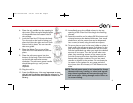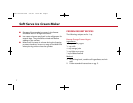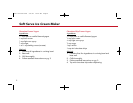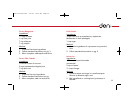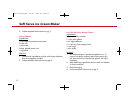
6
®
HINTS AND TIPS
■
Read all the instructions and save for future
reference.
■
Chill all recipes before pouring in the ice cream
maker.
■
Flavors should be more pronounced before
freezing.
■
For better results drain your yogurt.
■
We do not recommend adding chopped or chunky
ingredients into the soft serve dessert until after
dispensed, because it may clog the machine.
■
For pre-cooked recipes, make the mixture one day
before. This will allow it to cool completely and
increase in volume.
■
Recipes that do not require cooking are best made
with an electric mixer to increase the mixture’s
volume.
■
Cream, sugar, eggs, and milk are the most common
ingredients in ice cream. Substitutions with similar
ingredients may be used depending upon your
preference. For example, any type of cream can be
used, however, there will be a difference in color,
texture and flavor. The richer the cream you use, the
richer the results. Heavy cream contains about 36%
fat, which is the richest. Whipping cream, coffee
(light) cream and half-and-half contain approximate-
ly 30%, 18%, and 10% of fat respectively.
■
4 oz. of egg substitute is equivalent to two eggs.
When adding or using eggs in any of our recipes
we recommend heating or cooking the recipe
mixture.
■
Artificial sweeteners can be used in place of sugar;
however, they should be added when the mixture is
cool, at most, room temperature. If sugar is dis-
solved by heat in a recipe, omit this process when
using a sugar substitute. Instead, mix sweetener in
until thoroughly dissolved.
■
Adding one small egg white will volumize most
mixes.
■
If a recipe calls for alcohol, add it last, only minutes
before complete freezing. Otherwise, the alcohol
may impede the freezing process.
■
The taste of sorbets is largely affected by the
ripeness and sweetness of fruit or juice. For tart
fruit, add sugar or omit sugar if fruit is very ripe.
Once frozen, the ice cream will taste less sweet
than the mixture.
5540 Instructions 5/6/09 10:32 AM Page 6







